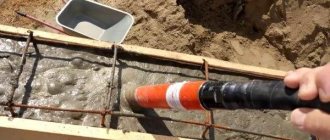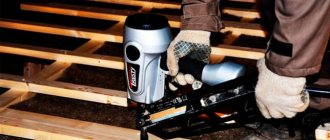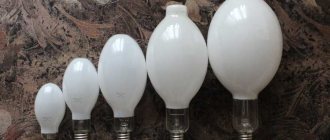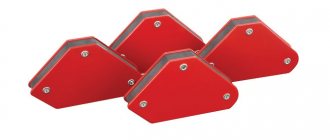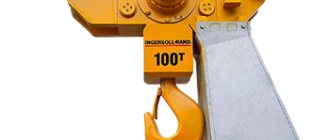Areas of application
A cartouche gun is a universal tool; it is used for applying various types of plaster and finishing surfaces. Using the device you can carry out the following work:
- applying starting plaster in a layer of no more than 1.5 cm;
- painting surfaces with paint or varnish of a thick consistency;
- performing decorative plaster in different versions - mosaic, Venetian or multicolor style;
- priming walls and ceilings in the house;
- applying liquid wallpaper;
- covering surfaces with silk plaster, mixtures with marble chips or liquid cork.
Experienced craftsmen use the gun not only for finishing walls and ceilings, but also for filling floors with a special solution with a suitable viscosity.
Professionals do not recommend using a cartouche gun for starting plaster with a layer of more than 1.5 cm or for leveling walls. The spraying method does not involve applying a thick layer of building mixture.
Device design
To properly operate a finishing gun, it is important to know its main parts and understand their purpose and operating principle. Diagram of the plaster gun:
- A funnel-shaped ladle into which the solution is poured. Made from aluminum or durable plastic, for ease of use, most models have a handle on the side to support the heavy container.
- A short steel barrel with a handle on which the trigger is mounted. With its help, the device is turned on and the air supply valve opens. The hose is securely attached to the bottom of the handle through a fitting, allowing the mechanism to withstand a certain degree of pressure.
- A suction tube with a round cross-section (they are also called a nozzle or nozzle), which is connected to a pneumatic line.
- A nozzle that acts as a spray due to special holes. The solution flies out through them under pressure. The kit includes several nozzles of different diameters, cut at a certain angle.
- Compressor for air supply.
- A cleaning rod, with the help of which the holes are cleared of adhering mixture.
The hose is connected to the compressor using threaded joints or quick-release fittings. You can connect directly or through a receiver. The fastening parts are made of stainless steel and are not subject to corrosion.
Principle of operation
The working process of a cartouche gun is as follows: the compressor supplies air, which enters the nozzle under pressure, at the same time the mixture from the container flows into it. A stream of air blows the solution out of the holes, resulting in an even distribution of the liquid over the walls. The master can only direct the jet correctly to the surface and add the solution to the container in time.
There is a similar device - a hopper bucket. It consists of a container with holes at the bottom, through which the solution is sprayed directly onto the walls using a compressor. Due to the absence of a nozzle, the air pressure is always lower than that of a cartouche gun, so the hopper bucket is not suitable for creating a decorative coating; it can only be applied with a thick solution.
What solutions are suitable
Construction mixtures for plastering and finishing work are produced in a large assortment. They come ready for application, or dry, which you need to mix yourself. The basis of the solution is gypsum or cement; various natural or synthetic additives are needed to improve the strength and ductility of the coating.
Gypsum mixtures provide elasticity and viscosity of the solution, but harden quite quickly. They are used for interior decoration of rooms with normal or low humidity levels. Cement mortars are widely used due to their moisture resistance; they are suitable for any finishing work - facades, interior openings, swimming pools, bathrooms and other objects.
The cartouche gun can be filled with almost any type of solution, the main thing is that the consistency of the mixture allows the solution to flow smoothly down the walls of the bucket. Professionals conventionally designate a suitable structure as “thick sour cream.” Solutions with synthetic additives, marble chips or adhesive mixtures can be poured into the device.
Technical specifications
In order for the construction mixture to be sprayed freely from the gun and lay on the surface in an even layer, you need to choose the right nozzle with a suitable diameter. The cutting angle of the nozzle depends on the thickness of the solution. The denser the mixture, the larger the angle is set.
The following parameters are most often used in work:
- for liquid solutions, the nozzle cut angle is set to 15-20 degrees;
- Thick batches are applied at an angle of 45 degrees.
A correctly selected spray angle ensures high productivity without unnecessary losses of raw materials.
Dimensions of nozzles, their purpose
The diameter of the holes in the nozzle (nozzle) is selected according to the size of the particles in the solution mass. Nozzles with a circumference of 2.5-3 mm are installed for working with fine liquid solutions. For thick and viscous mixtures, nozzles with a diameter of 4, 6 and 8 mm are suitable. These are the most popular nozzle sizes, so they are often sold complete with a gun.
If the size of the nozzle does not correspond to the consistency of the mixture being poured, then even spraying will not work - the mixture will fly out in lumps, or the spraying will stop because the nozzles will be clogged with the solution.
Popular models
Zitrek SN-01
This is a budget model of a pneumatic bucket from the Czech brand Zitrek, designed for wall work. The volume of the mixture hopper is 3.5 liters. There are 4 nozzles for exiting the mixture, each with a diameter of 20 mm. This diameter allows you to cover walls with a thickness of 5 mm. On the positive side, users note the speed of application and the fairly comfortable long handle. But the Zitrek SN-01 has a number of significant shortcomings (which are offset by its affordable price). First of all, this is the material - the bucket is made not of stainless steel, but of ordinary metal with spraying.
Zitrek SN-02
A pneumatic bucket produced by the same company Zitrek, but intended for ceiling work.
Meets standard hopper bucket specifications:
- Number of nozzles – 4, with a diameter of 20 mm.
- The required working pressure is 4-6 atmospheres.
- Hose diameter – 16-18 mm.
- Bowl volume – 3.5 l.
- Compressor capacity is 350-400 liters per minute.
- The maximum fraction of the mixture is 6 mm.
Unlike its “relative,” this bucket, judging by reviews, is actually made of stainless steel. With its help, you can achieve uniform distribution of building mixtures with a minimum layer of 5 mm. Recommended working distance is 5-10 cm.
PROFMASH KSH-4
Plastering ladle for finishing work on vertical surfaces. The volume of the container for construction mixtures is 3.6 liters, the required working pressure is 6-8 atmospheres. For spraying there are 4 nozzles with a diameter of 18 mm. The application speed declared by the manufacturer is 60 square meters per hour. The hopper bucket belongs to the budget category, and has gained popularity due to its ease of use and its affordability. Unfortunately, the device has a number of shortcomings, which are noted by owners in reviews.
HYVST 07-OMG-II
The bucket also belongs to the budget segment and meets the following characteristics:
- Bowl volume – 3.5 liters.
- Productivity – 40 kg of dry mixture per hour.
- The required compressor capacity is 350 liters per minute.
- The maximum hose length is 15 meters.
The pneumatic bucket is made of stainless steel, which significantly increases its strength. There are no replacement nozzles included; the device is intended for applying plaster only to vertical surfaces. Owners note the ergonomics and reliability of this plastering shovel, as well as its good performance.
TeaM K350
Wall hopper bucket from the Italian company TeaM. Equipped with a 3.5 liter container for construction mixtures. There are 4 output nozzles with a standard diameter of 20 mm. Made of stainless steel.
Other characteristics of the bucket:
- The required working pressure is 4-6 atm.
- Hose diameter – 16-18 mm.
- The distance when applying the material is 10-15 cm.
- Total weight – 2.16 kg.
Thus, this hopper is a small, compact device that has earned popularity among buyers due to its high performance.
Pegas 2721
Hopper bucket manufactured by Pegas Pneumatic, which specializes in pneumatic equipment for construction and repair.
Designed for processing vertical surfaces and has the following technical characteristics:
- Number of nozzles – 4 x 20 mm.
- The minimum compressor capacity is 320 liters per minute.
- The required pressure is 6 atmospheres.
- The minimum thickness of the coating layer at the outlet is 2.5 cm.
- Working distance from the surface is 5-25 cm.
HOPPER-PRO U-3
This is a more professional tool, complete with replaceable dies with nozzles located at different angles. The tool is also equipped with seven replaceable nozzles for adjusting the air supply level. It is possible to work with one or three outlet nozzles. Therefore, this hopper bucket can rightfully be called a full-fledged universal finishing tool.
The declared productivity is 45 square meters per hour of work. This is the minimum productivity when working with one output nozzle, so the pneumatic bucket is not inferior to other models in terms of speed.
Thus, the hopper bucket is truly an indispensable device for repair and finishing work. A correctly selected and high-quality pneumatic bucket can significantly facilitate the work, distribute the coating evenly and firmly over the surface, and save the technician’s time.
Spray guns for whitewashing: what they are, types, selection criteria, rating and review of the best models, their pros and cons, tips and recommendations for selecting a device
Selecting a compressor
The efficient operation of a cartouche gun directly depends on the power of the compressor. Any model of tool has instructions in which the manufacturer indicates the permissible limits for air pressure supply, as well as recommended compressor performance. Construction guns can easily withstand a regime of 4-8 atm, while the compressor capacity should be 200-250 l/minute.
Cartouche guns for plastering walls are produced with different performance standards. The most popular compressor models have the following parameters:
- air pressure – minimum 1.5-3.5 bar, maximum level 3-8 bar;
- air flow – 150-350 l/min;
- compressor performance – minimum 165-170 l/min, maximum 170-250 l/min.
There are 2 types of compressors - piston units are often used in domestic work, expensive screw units are purchased by finishing teams for processing large areas.
Air at high pressure can tear out or damage the hose; low power pressure will not ensure the spraying flow rate, so before starting work, you need to test run the gun with a small amount of mixture in order to set the optimal operating mode of the device.
Plaster spraying process
As stated in the first paragraph of the article, applying plaster with a spray gun is much more effective than the manual method. This tool saves effort and time, but has its own operating rules that must be followed if you want to get a layer of exemplary quality.
- The first and most important step, on which the evenness of the surface you create will depend, is the installation of beacons. This must be done strictly according to the level.
- As you know, plaster dries within 20-30 minutes, and if you do not have time to apply it during this time, it will be unusable later. Preparing a large batch of solution should only be done when using a hopper bucket with high productivity. The operating speed of a cartouche gun is at least 3 times slower, and for this tool you should not mix large volumes.
- The distance from the tool nozzle to the surface being processed is adjusted individually as work progresses. The average distance for a kaartushny gun is 30 cm, and for a hopper bucket - 6 cm. The main thing is to ensure that when spraying, the material does not splash off the wall.
- When the solution is applied, it is necessary to give it an even shape. For this task, a construction rule is used.
- Upon completion of work or during a break, it is strongly recommended to immediately rinse the tool so that when using it again you do not waste a lot of time scraping off dried material. It is enough to immerse the hopper bucket in a container of water and apply air pressure to it for purging. The process of washing the texturer is identical, but instead of immersing the tool in a container, water is poured into the tank and also sprayed under pressure.
vote
Article rating
Types of pistols and recommendations for selection
Cartouche-type construction guns are conventionally divided into household and professional tools. They work on the same principle, but differ in size, weight and container capacity for the mixture.
- Household pistols. These models have a 3-5 liter bucket and operate at a permissible pressure of 3-4 bar. The kit does not always include replacement attachments. This tool is suitable for finishing small surfaces; it is not designed for daily intensive use.
- Professional devices. The container for the solution holds volumes of more than 8 liters; it has a special flap on top to prevent the mixture from pouring out. A special valve is installed at the inlet fitting, which can be used to regulate the air supply. The material and build quality are designed for long service life. The set includes replacement nozzles of different diameters, suitable for solutions of any thickness.
You need to choose a model taking into account its further use - if you need to carry out small repairs yourself from time to time, an inexpensive household-type tool will do. For long-term large-scale work, it is better to purchase a professional pistol.
The cartridge gun should be selected taking into account the power of the compressor. Chips and cracks are not allowed on the body and bucket; fasteners for replaceable nozzles must be easy to unscrew. When purchasing, make sure you have a passport, instructions and warranty card.
Reviews of the Wester KP-10 pistol
You can purchase this model for 2200 rubles. Its minimum productivity is 165 liters per minute. In the same amount of time, 250 liters of air will be consumed. Consumers note that the work is simplified by the Euro quick-release adapter, as well as replaceable nozzles, the diameter of which varies from 4.5 to 8 mm. After purchasing a tool, many craftsmen are interested in whether it is possible to buy nozzles of smaller diameters. You should be prepared for the fact that equipment of this kind does not provide such a possibility. You may experience that air is constantly flowing from the nozzle. In this case, as consumers assure, the tool is not working, you should contact a service workshop for help.
Plastering of walls is carried out both outside and inside the building. This is a labor-intensive process, and it takes a lot of time. A cartouche gun for plaster or a pneumatic ladle is a structurally simple device that greatly simplifies and speeds up work. In addition, it greatly facilitates the work of the plasterer.
Mechanization allows you to save not only effort, but also time and money. Its advantages:
- the master does not need to constantly bend over for the plaster mixture;
- the solution is applied to the wall in an even layer;
- plastering occurs faster and with better quality.
Using a special gun for application, you can prepare the wall for wallpaper or painting. Using additional attachments, you can even apply liquid wallpaper or textured plaster. The scope of application of the pistol is wide; it quickly pays for the money spent on the purchase. Many companies offer construction tools for rent.
Plastering stations are an even more effective means of applying plaster. A full cycle of work takes place in them: mixing the solution, supplying the mixture to the surface. The master’s task remains to add the ingredients on time, hold the gun correctly, creating an even layer. This option is, of course, attractive, but is usually used on an industrial scale.
Manufacturers
Cartouche pistols are presented on the market in a huge assortment. A review of the most popular models from the world's leading companies will help you not to get lost in such diversity.
- Briqadier (Switzerland). The pistol body is made of aluminum, the build quality ensures reliable and long-term operation. Cost - from 4200 rubles.
- Fubaq (Germany). Popular model DÉCOR G Container with a volume of 4.5 liters, a nozzle with an adjustable diameter for different fractions of mixtures. High quality is noted at a low price - 2550 rubles.
- MATRIX 57350 (Germany – brand, China – manufacturer). The solution bucket has a volume of more than 9 liters and is made of high-strength plastic. The cost is 2900 rubles.
Among the household types of construction pistols, the Russian-made BISON MASTER model is noted. The plastic body of the container holds 6 liters of solution, the nozzle diameter is 8 mm. The quality is not inferior to budget options from China and Korea, but it costs less – 1800 rubles.
Instructions for use
To properly plaster a surface with a cartouche gun, you must follow certain rules:
- the solution should be homogeneous, without lumps and debris;
- do not fill the ladle funnel to the very top - it will be difficult to hold it;
- When refilling the container, do not disconnect the hose;
- the distance from the worker to the wall depends on the thickness of the solution - the thicker it is, the closer the master should stand (average distance 20-25 cm);
- hold the gun so that the mixture is sprayed onto the surface at a right angle;
- set the appropriate compressor power, and then carry out a test spraying;
- press the trigger smoothly, without jerking;
- carry out the stream in even horizontal lines, the next row should overlap;
- After finishing work, disconnect the tool, first check that there is no air in the hose.
Even if there are no marble chips or other small inclusions in the solution, finishing work with the gun should be carried out in protective clothing and glasses to prevent the mixture from getting on the face and body.
If a finishing layer 2-3 cm thick is required, you need to spray the solution 0.5-1 cm, and achieve the desired size by reapplying the mixture after the previous layer has dried. Otherwise, the coating may quickly crack.
Operating principle
During operation, the unit ejects decorative solution from the nozzle at a certain angle. The composition of the cartouche gun for plaster includes:
The set of nozzles determines the density of the plaster solution. If thick compounds are used (for example, gypsum), the diffuser nozzle of the plaster gun is made at a bell angle of 30-45 degrees to increase the area of spraying the solution and increase productivity. For liquid solutions (used infrequently), the angle does not exceed 15-20 degrees, due to which the speed of work is maintained and the solution does not flow over the surfaces being treated.
According to user reviews , a plaster gun will be ineffective when used to speed up the application of a regular mixture (or when leveling walls). For a thick solution, you will need a lot of air and pressure created by the compressor, otherwise the mixture begins to quickly spread, and the inside of the cone is filled with its remains. The rather high initial density of the solution requires a very powerful compressor (nominal pressure 6-8 at, flow rate from 1000 l/min).
Decorative plaster is applied in a thin layer using the spraying method. Accordingly, the compressed air flow and pressure values will be less .
Hopper bucket or plastering gun
A gun for applying plaster could be classified as a pneumatic tool, if not for its competitor - the hopper bucket. The difference between the devices is as follows:
- In the ladle, the solution enters a separate container; there is no connection with the air supply line.
- The spray area does not depend on the angle of expansion of the angle, but on the angle at which the air masses enter the container with the solution.
- The hopper requires less pressure to operate, since there are no hydraulic losses when moving compressed air in the tube.
The undoubted advantage of a cartouche gun is that there is almost no loss of the working mixture; it will be directed and sprayed purely by the movement of the nozzle. The cost of the equipment is low; it can be used to apply any textured plasters without any problems, which is practically impossible to do with the help of a hopper-bucket.
The number of ornaments will increase significantly after purchasing an additional set of nozzles for the gun. This is not a difficult task, since the diameters of the connections are unified .
How to use cartouche pistols
The quality of mechanized application of decorative plaster on walls depends on the skills of the master. In almost all cases, a plaster gun will work well if you adhere to the following parameters:
- The air pressure required for spraying is 200-250 l/min.
- The thickness of the mixture laying layer is 10-12 mm.
- Excessive compressor pressure 3.5-4 at.
- The distance between the end of the device and the wall is set depending on the density of the mixture: for gypsum textures you will have to push the nozzle almost to the wall itself, and for rarer mixtures maintain a distance of 200-250 mm.
- To improve the quality and appearance of the coatings, it is recommended to use the unit in two steps, giving two layers with a smaller thickness: during the second pass, you can eliminate the shortcomings by waiting until the solution has completely set.
The work will require significant physical effort from the operator, so it is not recommended to treat too large areas at the same time. Experts advise working with areas of 1.5-2 m. Taking into account the likely losses, to treat such a surface you will need about 25 kg of plaster mortar (do not completely fill the upper funnel).
During the work, you should also pay attention to the fact that the plaster can splash outside the walls or facade, so it is necessary to provide the worker with a respirator and a protective helmet. You may also need protection from impact-resistant acrylic. It must be used when working with small stone chips so that its particles cannot get into a person’s eyes.
Work order
The working process using a gun takes place in several stages:
- The surface must first be cleaned of dust, primed and waited for complete drying.
- Install beacons that will provide an even layer of finishing.
- Mix the solution in such a volume as to prevent it from drying out during work (especially important if the mixture is gypsum or adhesive based).
Make sure that the consistency of the solution allows it to flow freely along the walls of the bucket, but is not too liquid, otherwise the quality of the coating will suffer.
The next layer cannot be applied until the previous one has dried.
Design features of the Hopper pistol
The plastering gun described above has an aluminum body that can withstand high loads. During long-term work, the master will be helped by the material feed lever lock. Fatigue when applying the mixture will reduce the ergonomics of the handle and the smoothness of the trigger. Due to the fact that the tank is based on nylon, the equipment is lightweight and chemically inert. You will notice that the surface of this part of the gun is resistant to mechanical stress. The diameter of the nozzles can be from 4 to 8 mm, with 6 mm acting as an intermediate value. The maximum permissible fraction size of 6 mm can be used during work.
The compressor of the Hopper brand plaster gun sets the output to 180 liters per minute. With this equipment you can finish not only horizontal, but also vertical surfaces. In one shift, which is equal to 8 hours, the master will be able to finish 200 m2 of surface, with a layer thickness of 3.5 mm.
How to care for your instrument
Even an expensive and high-quality tool can be damaged if it is used incorrectly and carelessly taken care of. To avoid faulty operation and failure of the gun, you must follow simple instructions:
- if it was not possible to use up all the solution, at the end of the work you need to drain the remaining solution from the container;
- bleed the air from the hose, and only then disconnect the gun;
- carefully unscrew the clamp and remove the funnel;
- Thoroughly rinse all removable parts (bucket, tube and nozzles) with water; you can use special detergents and, if necessary, a solvent;
- make sure that the gaskets are intact; damaged ones should be replaced immediately;
- periodically lubricate the trigger with oil;
- After cleaning, all parts and connections must be dried and kept disassembled until next use.
The gun should only be stored in a dry room - a humid environment promotes the rapid development of corrosion. Avoid direct sunlight, as this will adversely affect plastic buckets and rubber hoses.
The warranty period from the manufacturer is from 3 months to 1 year, the period depends on the model of the pistol and its cost. If you do not violate the rules for use and care, the tool will last for several years.
A cartouche gun for applying plaster and other building mixtures significantly simplifies the finishing work process, while physical fatigue is much lower than when finishing surfaces manually. Even without professional skills, more than 100 square meters can be processed per day. m area. Using a gun makes it possible not only to level or paint walls, but also to apply a decorative coating with a textured design.
Technology 1: scratch-off surface putty
When the working surface does not have large flaws, you can use the “scraping” technique. The technology is well suited for people who have no experience in the construction profession. Experienced craftsmen do not use this technique, because... consider it time-consuming. But putty applied with a roller and then removing uneven surfaces with a spatula will be smooth and well suited for wallpaper or painting the surface.
Materials and tools
To apply putty with a roller you will need:
- Roller. You should choose a tool with a pile length of no more than 0.5 cm. The roller can be used not only for putty, but also for priming walls.
- Putty knife. Beginners with no experience should not choose a tool whose working surface width is more than 45 cm.
- A bucket or other container in which the solution will be mixed if the putty is dry.
- Primer. Preference is given to formulations with a deep degree of penetration. If the work is done in a room with high humidity, you need to buy a composition with antiseptic additives.
- Putty. The choice of building mixture can be made based on the price of the product and the recommendations of the sales consultant.
- Serpyanka mesh. It is necessary if the working surface has joints, for example, drywall. The mesh is applied before sealing the seams and allows you to avoid the appearance of cracks in the future.
- A mixture for sealing seams, screws and other wall defects. You can buy a product specifically designed for these purposes. Another option is to fill up all the unevenness with a mixture that will be used to putty the surface of the wall or ceiling.
Additionally, you may need a construction mixer and a drill if dry putty was selected when purchasing. Trying to mix the composition with your hands is impractical. This work will take a lot of time and effort. But in cases where it is not possible to use additional tools, you should not prepare a large amount of working material at once.
If you ignore this recommendation, you will not be able to achieve uniform mixing of the mixture. Difficulties may also arise with putty. It may begin to harden before it is ready for use. You won't need power tools if you buy ready-made mortar.
Workflow Description
Work begins with cleaning the surface. You need to walk along the wall/ceiling with a napkin to remove cobwebs, dust, etc. Before applying putty with a roller, you should treat the walls with primer. It is necessary to follow the instructions indicated on the packaging (the composition may be concentrated, so it will additionally need to be diluted with water).
The roller or brush is dipped into the soil and then applied to the work surface. The composition should penetrate into all cracks and seams. To proceed to the next stage, you need to wait until the soil dries.
If the working surface is made of plasterboard, cover the heads of the screws and seal the seams (using sepryanka). It is necessary to ensure that the applied layer of putty does not protrude, but is flush with the wall. When the building mixture dries, you need to go over it again with soil.
Before use, the finished putty must be mixed thoroughly. If the mixture is dry, add water to it. The consistency of the putty applied with a roller should not be as thick as when working with a spatula. The composition should not remain on the pile in lumps, but should not flow down either.
Applying putty with a roller is no different from painting. The composition should lie on the work surface in a thin layer. At the next stage, take a spatula (you don’t have to wait for it to dry), apply it at an angle of 80°-85° and begin to remove the putty. This technique allows you to fill all existing cracks. To get the smoothest possible surface, after drying you should use fine sandpaper.
The work is completed by removing dust and treating the soil surface.

